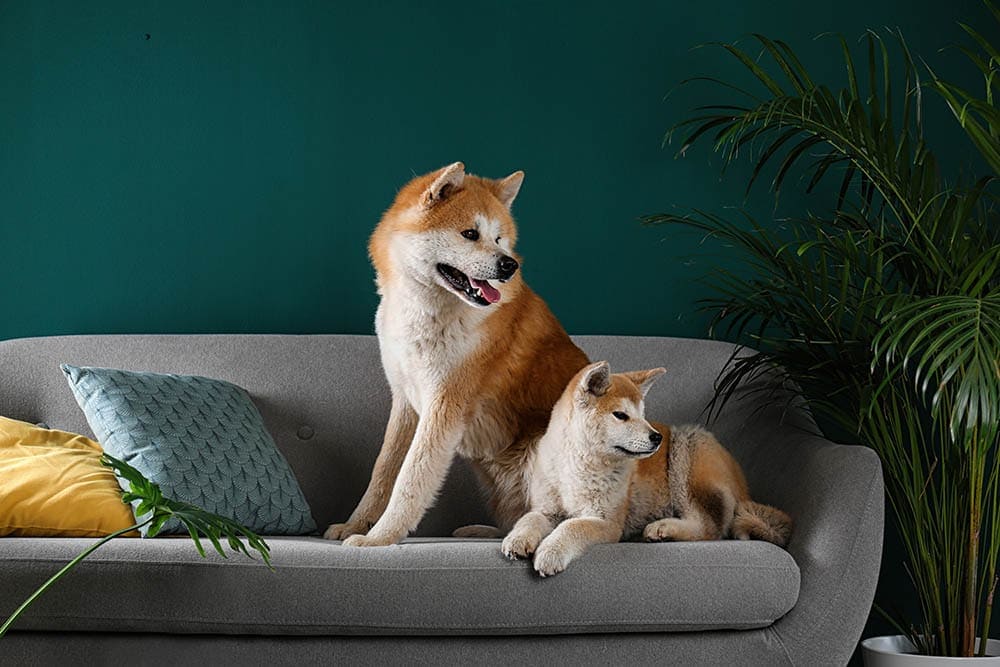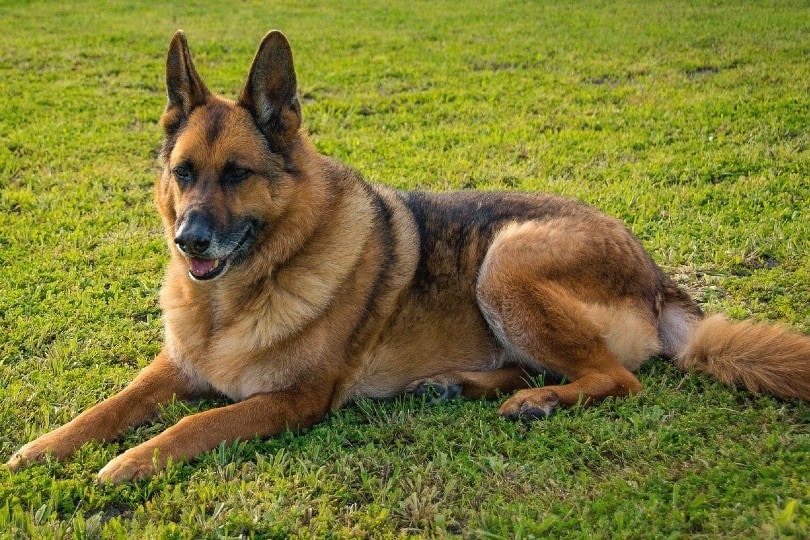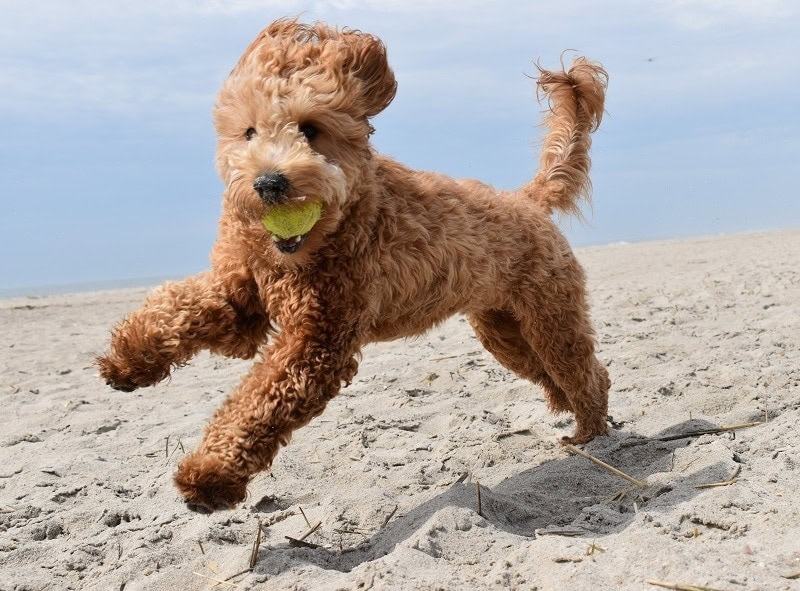How to Stop a Dog From Peeing on the Carpet: 10 Expert Tips
By Ashley Bates
Updated on
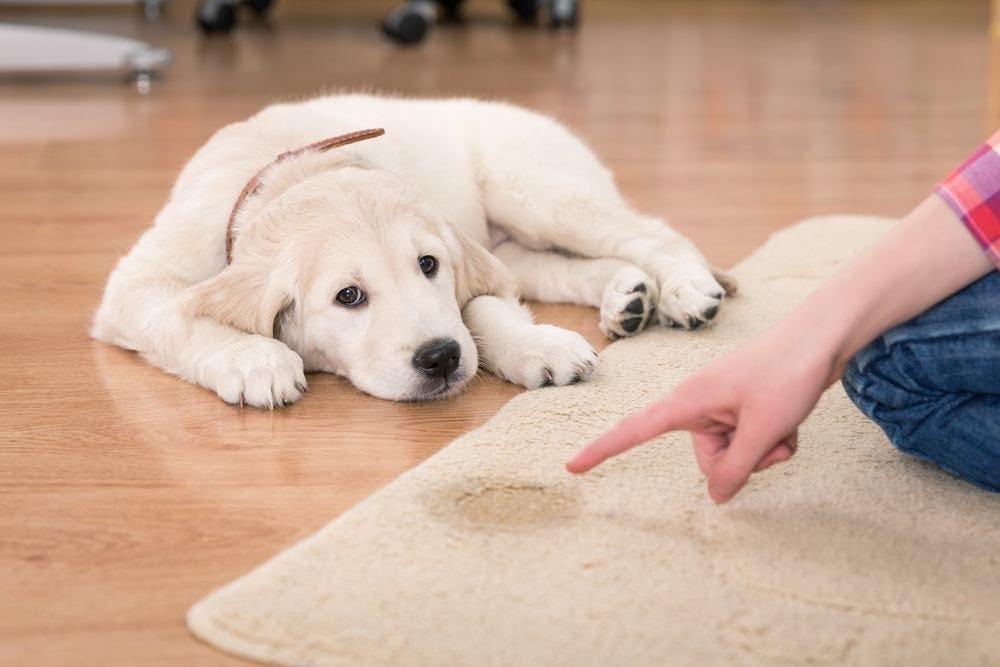
Some dogs just seem to love peeing on our expensive carpet! No matter how often you clean it up and try to diffuse the situation by using odor-neutralizing cleaners and DIY solutions, they seem to keep re-soiling the same surfaces.
So how exactly do you keep your dog from ruining your beautiful carpet? Here are some tips, but we recommend working with your vet to determine the best action.
The 10 Tips to Stop Your Dog From Peeing on the Carpet
1. Visit Your Vet
If your dog is peeing on the carpet and this hasn’t happened before, you may need to visit your veterinarian. There could be an underlying health issue or another problem you can’t diagnose alone.
Your vet can review your pet’s health history and give them some basic testing to ensure all is well. They can also give you resources on how to handle this behavior going forward.
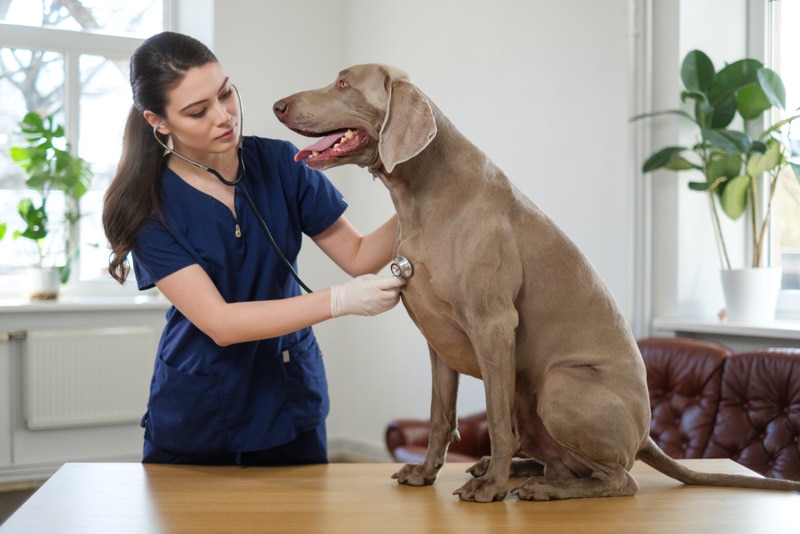
2. Use Deterring Scents
If your dog is using the bathroom in the house often, they probably have specific spaces in the home they frequent. Some dogs pick a specific corner, while others will only use certain parts of the floor.
That is because they can smell the remnants of their messes before and tend to go in similar areas. The key here is to eliminate the scent once and for all, derailing their sense of smell.
Vinegar
Vinegar is a powerful cleaning agent with a laundry list of other benefits. You can spray it on the affected areas to get rid of your dog’s previous scent.
Baking Soda
Baking soda is a fantastic pH neutralizer. The chemicals in baking soda are ideal for neutralizing acids in urine and other bad-smelling spots.
Essential Oils
Before using essential oils, we recommend being very careful. Certain essential oils can be very toxic to dogs, which could open up a brand new myriad of problems you don’t want. So as with anything else, exercise caution and ask your vet before using any of the following.
- Cinnamon
- Lemon
- Eucalyptus
- Citrus
- Orange
- Citronella
Using the incorrect amount of essential oils can irritate and even make your pet very sick. So again, run any new DIY spray or product past your vet before you take the plunge.
3. Commercial Scents
Instead of looking for a DIY remedy, you can always choose to go commercial. There are tons of senses on the market that are designed explicitly for this purpose. The whole idea is to neutralize pre-existing smells and redirect your dog’s attention.
You can purchase these products just about anywhere. Local department stores will have certain selections, although some of them might not be as potent as others. Sites like Chewy and Amazon also have odor-neutralizing sprays.
4. Offer Potty Breaks
You might not give your dog enough potty breaks, no matter what you think. If you have a group of dogs and you let them all out simultaneously, it’s important to understand that not all dogs operate on the same schedules.
Smaller dogs tend to have to go to the bathroom more than bigger dogs and certain underlying health conditions can also contribute. It also depends on your dog’s water intake. Dogs that drink more water will naturally have to go outside more frequently.
So, if it seems like your dog can’t go very long without having an accident, simply offer more potty breaks.

5. Use a Doggy Door
Granted, this option will not work if you live in an apartment or other rented facility. However, consider installing the puppy door if you own your own home and have a fenced-in backyard.
These doors are sufficient for allowing your dog access to the outside without you having to put in much effort. Naturally, you will need to make sure that your door is compatible with the doggy door you purchased.
Also, you will want to secure your door every night to prevent unwelcome guests, anything from human intruders to backyard vermin and alley cats. Most doors have extremely efficient safety mechanisms and are generally easy to install.
6. Use Puppy Pads
Puppy pads are not something that we recommend for long-term use. But if you’re having trouble with your puppy peeing on your carpets, you can place the puppy pads over commonly used spaces. This will prevent any accidents from getting through onto your valuable fabrics.
Even though this can be a nice precaution, we recommend only using them as long as you have to. Try not to get your dog used to using them, as they may become dependent.
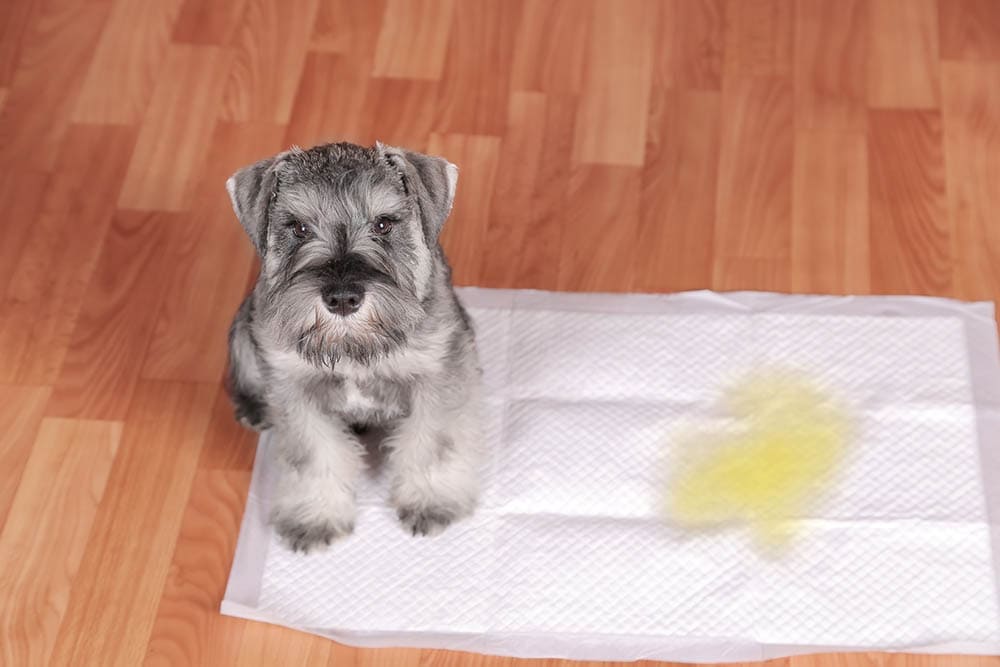
7. Retrain
If your dog can’t quite seem to get it right, it might be time to retrain them using a different approach. There are tons of training tools on the Internet to give you some great ideas. Dog trainers offer free tips and practices on sites like YouTube and other social media platforms.
If it’s all proving to be too much for you, you could consult with a dog professional specializing in behavior and other forms of training. Often, the help of a professional will give you and your dog some resources to work with.
Keep in mind that most times, this is a training experience for both you and your dog. It is a way for you both to communicate so your dog can go out to the bathroom efficiently and you can address the situation appropriately.
8. Crate Your Dog
Crating your dog might seem unnecessary, especially if you’re home and watching them. However, if they continue to have accidents, you should crate them until they correct the behavior. Every time you let your dog out, ensure they do their business.
Instead of letting them back in the house to roam freely, immediately put them in their crate or enclosure. This will prevent them from having accidents on your carpet and allow you to create a time-based system to ensure they’re being let out at appropriate intervals.
This, naturally, is not a lifelong practice. Rather, it is a tactic put in place to prevent your dog from soiling your home and giving them that extra reinforcement to use the bathroom outside.
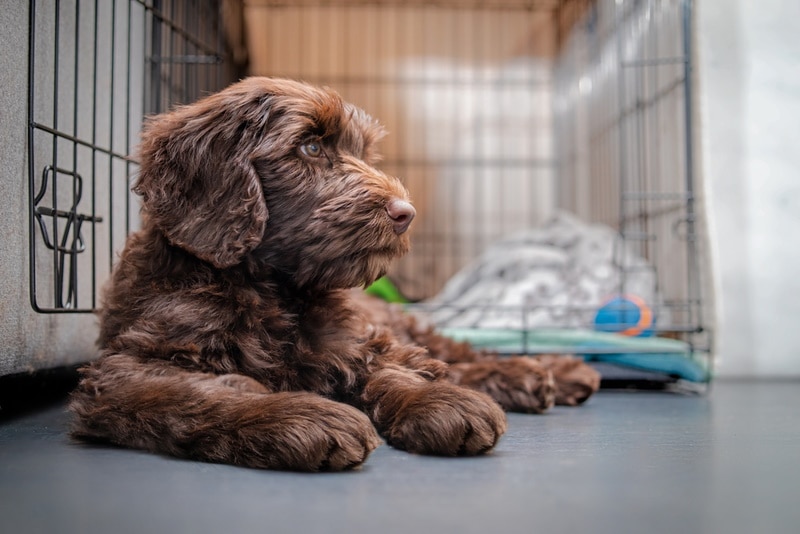
9. Limit Roaming Space
Don’t let your dog out of your sight. If you need to, limit your dog’s roaming space to a specific room and gate off others. This way, you can constantly monitor your dog, and they don’t have the option to run around and soil your carpets.
Purchase a few gates or put up reinforcements to keep your dog in a specific room. If you’re in your bedroom, make sure the door is shut. If you’re in a main space, block off doorways.
If your dog shows any sign they’re getting ready to use the bathroom, you are right there to redirect them to the good old outdoors.
10. Spay or Neuter
If you still need to do so, spaying or neutering your dog is a great idea. Instead of peeing on your carpets, your dog could be exhibiting marking behavior. If that’s the case, they will continue the behavior as long as it serves them.
Talk with your veterinarian about making an appointment to perform the surgery. Once the hormones have left the body, these behaviors typically decrease naturally.
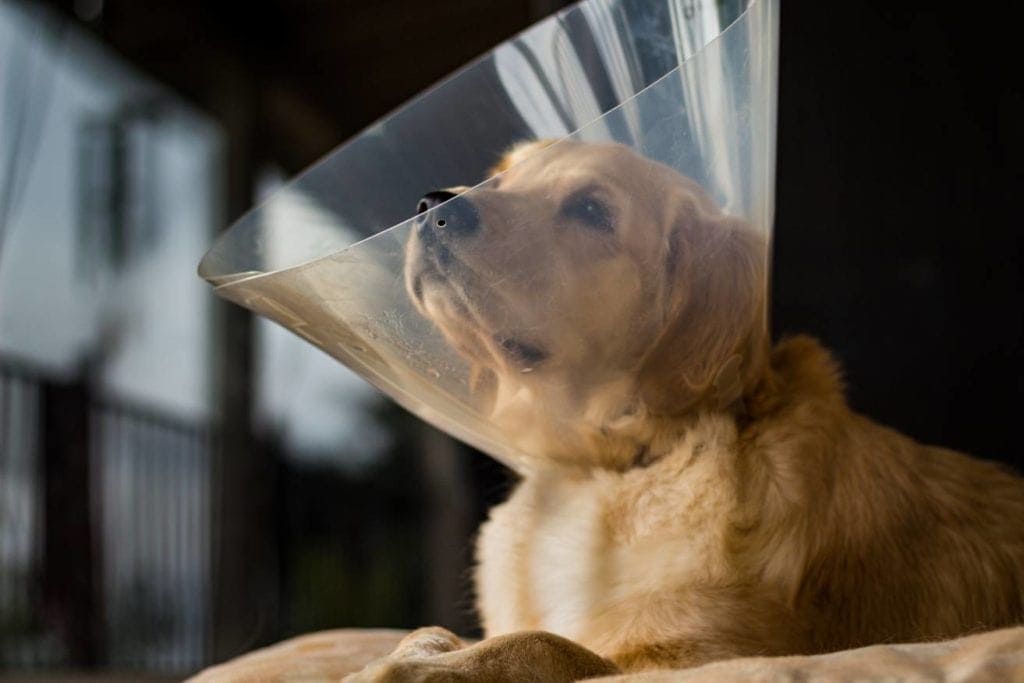
What Can Cause a Dog to Pee in the House?
While these are some tips and tricks on how to prevent your dog from peeing on your carpet, getting to the underlying cause is key. Here are some different reasons why your dog might be exhibiting this behavior.
Behavioral Problems
This could quite simply be a behavioral issue. If so, you must implement specific training to accommodate the problem. We highly recommend looking out for behavior specialists to have a clear action plan.
You can find many resources online from dog trainers that give you tools to use at home for free; different professional trainers will have varying rates depending on the area you live and their professional rates.
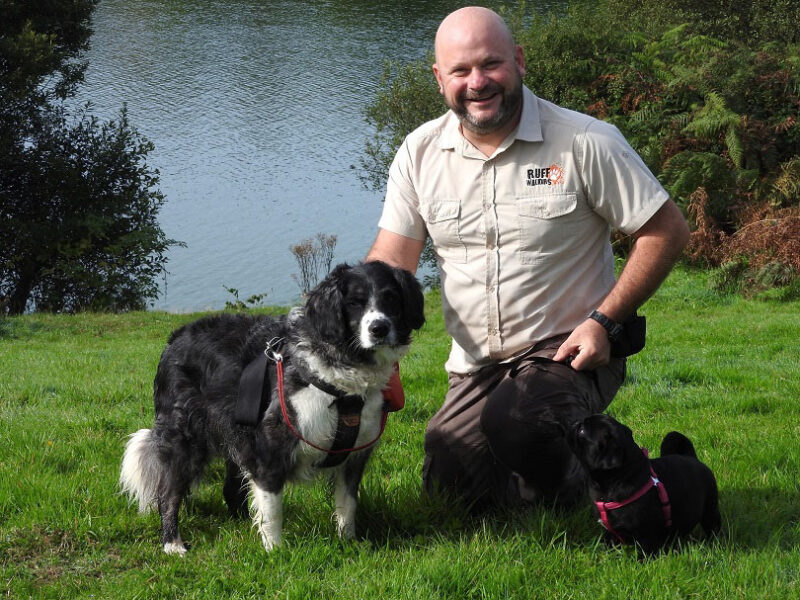
Stress
Stress can do some pretty crazy things to your dog’s behavior. If they feel out of their element, they might be doing things they otherwise don’t. It’s best to look around your environment and ask yourself what has changed and how your dog is responding to the atmosphere.
Territorial Marking
As we mentioned in tip number 10, spaying or neutering can eliminate many problems with peeing in the house. Territorial marking is extremely common among unaltered males. If your dog is lifting their leg and doing their business, they’re probably showing everyone around them whose house this is.
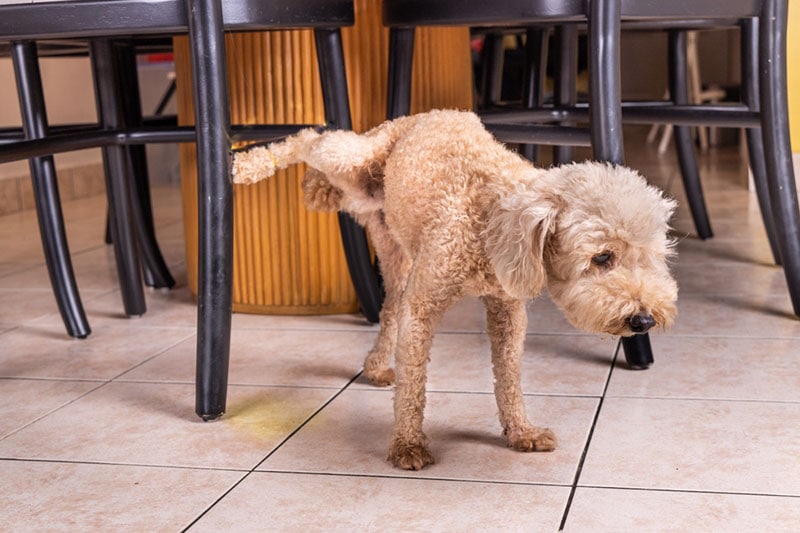
Underlying Health Issues
Your dog might have an underlying health issue that is keeping them from being able to hold their urine. If that’s the case, you might notice that they use the bathroom just a few minutes after being outside.
So many underlying factors could be the problem. It could be anything from a urinary tract infection to something far more severe. Once proper vetting is done, it’s easier to determine for sure. So, don’t hesitate to make an appointment.
Age
Unfortunately, age can take a toll on your dog’s body. They may not be able to hold it like they used to. If that’s the case, you’ll want to give your senior friend more potty breaks. You should put other measures in place as well to prevent accidents in the house.
Conclusion
Some dogs gravitate towards peeing on the carpet. However, there’s nothing that a little retraining can’t fix. If this behavior is new, always scour the environment to find potential triggers and watch their behavior to see if they’re acting differently.
In any case, we recommend reaching out to your vet first. Typically with these new issues, your vet can help determine the best plan of action to decrease the behavior. If needed, they could put you in touch with a fabulous canine professional in your area to work on it further.
Related Read:
- How to Stop Excitement or Submissive Urination in Dogs: 10 Ways
- 6 Reasons Your Dog Licks Pee & What to Do About It
Featured Image Credit: Olimpik, Shutterstock


